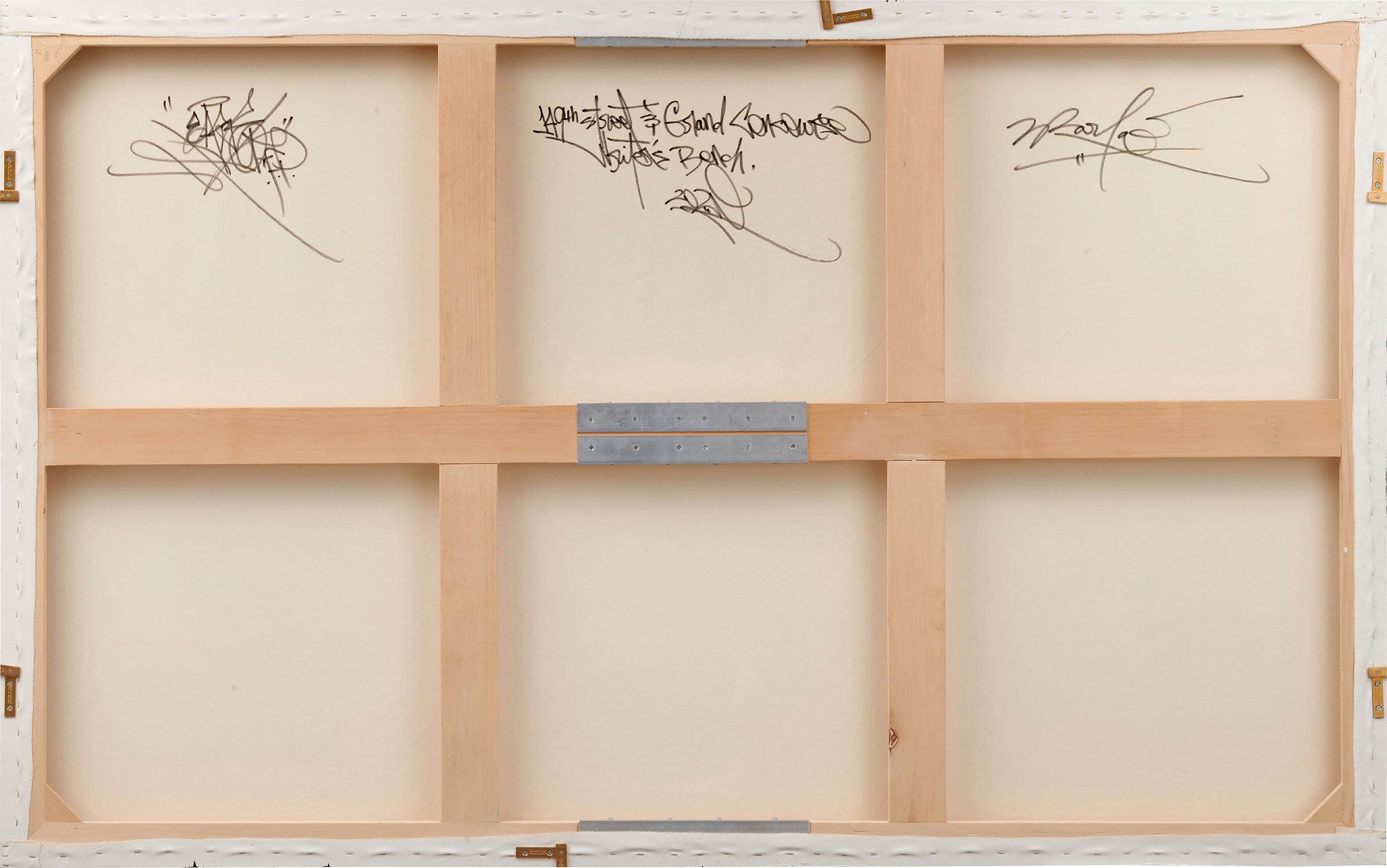





47
José Parlá
Writers' Bench: Grand Concourse & 149th Street, The Bronx
signed, titled and dated '"149th Street & Grand Concourse Writer's Bench" 2020 J Parlá' on the reverse
acrylic, ink, collage, enamel, and oil paint on canvas
153 x 244.3 cm. (60 1/4 x 96 1/8 in.)
Executed in 2020.